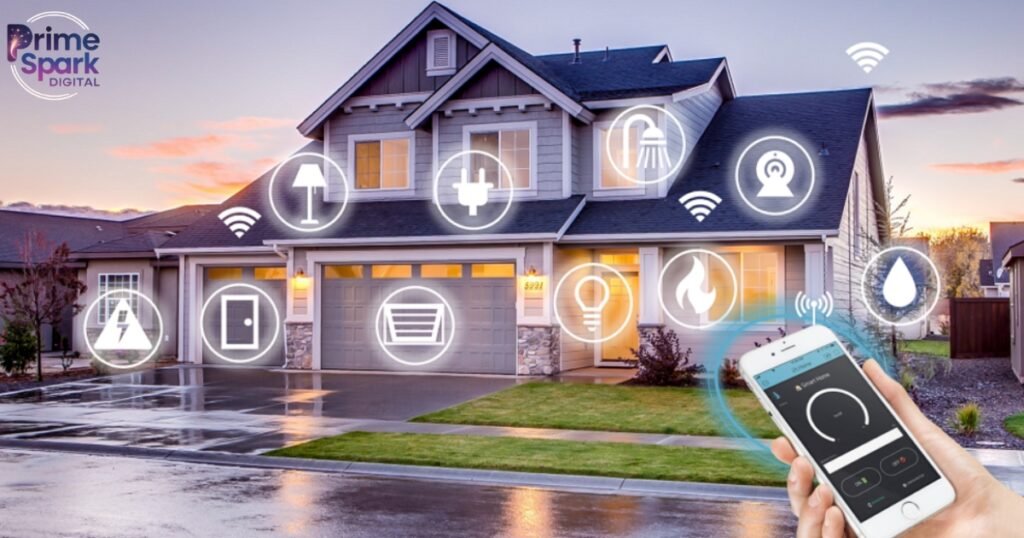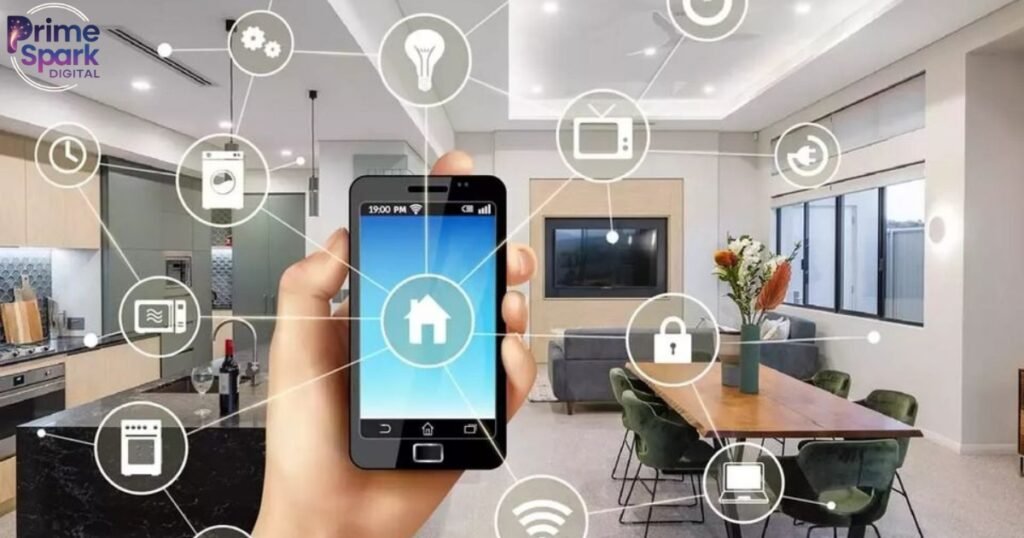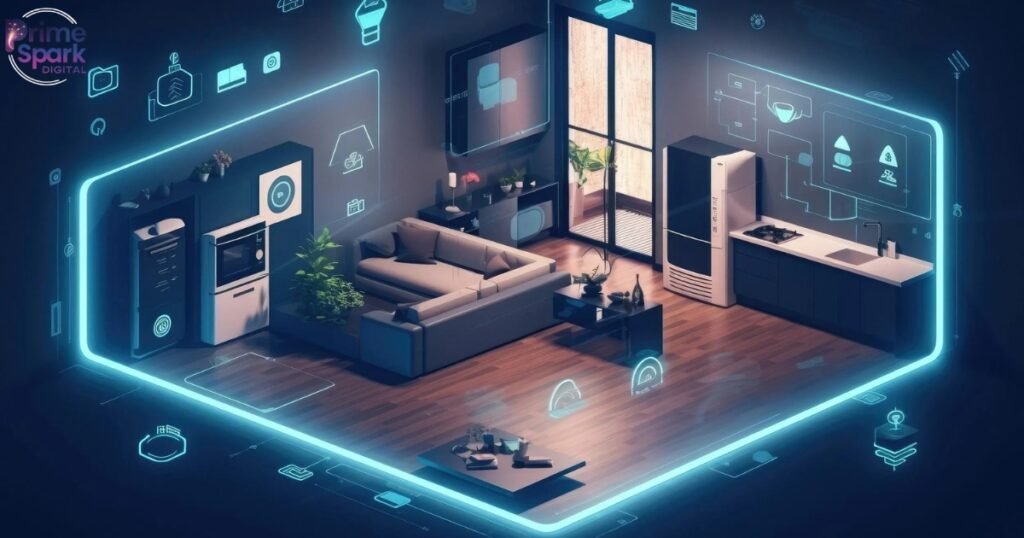Smart Homes Using AI in India Opening Up New Possibilities
Smart homes using AI in India opening up new possibilities are changing how people live, work, and connect with their surroundings. As technology gets smarter, homes are no longer just places to stay—they’re becoming personalized living spaces driven by Artificial Intelligence (AI). From voice-controlled home devices to advanced home automation systems, this shift is creating comfort, efficiency, and safety like never before. The growth of connected devices and Internet of Things (IoT) in homes is making everyday tasks easier and more intuitive. With smart homes using AI in India opening up new possibilities, the future of modern living is already here—and it’s smarter, safer, and more responsive than ever before.
What Are Smart Homes and How Is AI Powering Them?
Smart homes are houses that use connected devices and home automation systems to make daily tasks easier. These systems include lights, locks, fans, and cameras that can be controlled remotely. But what makes them truly smart is the use of Artificial Intelligence (AI). AI understands how people live, what they prefer, and what they need.
AI-powered smart home solutions use Voice Assistants, Natural Language Processing (NLP), and Machine Learning to adapt to your habits. For example, a smart thermostat in India can learn what temperature you like and adjust automatically. These systems also offer better home energy management by using sensors to reduce energy waste. That means lower bills and a greener home.
Why Smart Homes Are Booming in India?

The Indian smart home market is growing fast. As more people get access to the internet and smartphones, they are looking for better ways to manage their homes. Affordable AI-powered appliances and strong mobile networks are making it easier to bring smart technology into Indian homes. Even people in smaller cities are now using smart lights, locks, and speakers.
Also, many Indian tech startups are now building smart solutions made for local needs. These tools often include regional language support so people can talk to their homes in their own language. This rise is fueled by fast urban growth and new projects under the Smart Cities Mission that aim to make cities smarter and cleaner.
Core AI Technologies Behind Smart Homes in India
Smart homes run on strong AI technologies like Machine Learning, Natural Language Processing (NLP), and Computer Vision. These help devices learn from your actions and make better decisions. For instance, Voice Assistants use NLP to understand voice commands and reply in real time. AI-powered climate control systems can adjust the temperature based on weather and personal comfort.
Other tools like IoT Analytics, Predictive Maintenance, and Anomaly Detection help keep homes safe. They also make sure everything works smoothly. Fall detection sensors use Computer Vision to watch for sudden falls in elderly people and alert family members. These technologies are becoming more reliable thanks to Edge AI and 5G technology.
Benefits of AI-Powered Smart Homes for Indian Consumers

AI-powered smart homes are helping people in many ways. They save money by using less power through smart lights and smart meters. They make life easy by learning your habits. Imagine your coffee starting on its own every morning or lights turning off when you leave a room. That’s what smart homes can do.
For families, they offer peace of mind. AI for home safety can detect motion when no one should be home. Voice-controlled home devices also help those with mobility issues. And through appliance monitoring, you can track the health of your gadgets and fix them before they break.
Real-Life Case Studies: Smart Homes Transforming Lives in India
One couple in Hyderabad installed a full home automation system using a smart home hub. They linked 30 devices, from lights to fans and even their geyser. They now control everything with their phone or voice. Their monthly power bill dropped by 35% thanks to better home energy management.
Another example is an elderly man in Pune who lives alone. His home uses fall detection sensors and Voice Assistants. If he falls or calls for help, alerts are sent to his son in seconds. These are just a few ways smart homes are making lives easier and safer.
Key Challenges and Barriers to Adoption in India
Even with all the benefits, smart homes face challenges in India. Many rural areas still struggle with weak internet and power supply. That makes it hard for smart systems to work well. Also, some people worry about data privacy in smart homes. They don’t feel safe knowing devices are always listening or collecting data.
Another issue is cost. Some smart tools are still too expensive. Many people can’t afford full setups. Even those interested may not understand how affordable smart home technology can be. That’s where knowledge gaps become barriers.
Solutions and Best Practices to Overcome Barriers
To fix these problems, companies are working on devices that need less data and power. That helps with urban vs rural adoption. More firms are also adding regional language support so more users can enjoy smart features. And to solve privacy fears, devices now come with data encryption and GDPR compliance.
For cost, easy payment plans like EMI for smart devices make tech more reachable. Tools built with Matter protocol, Zigbee and Z-Wave, also ensure different devices work well together. That way, people can start small and expand over time.
The Future of AI-Powered Smart Homes in India

The future is exciting. More homes will use 5G technology, making devices faster and more reliable. Edge AI will allow data to be processed locally, improving both speed and privacy. Over time, smart systems will even use your data to predict what you need before you ask.
Homes will also become part of bigger smart cities. With tools like IoT Analytics, data from homes will help improve waste systems, traffic, and energy use. That means better living not just inside your home but across your entire city.
How to Get Started With AI Smart Home Tech in India?
Getting started is easier than it looks. Begin with a smart home hub, a few voice-controlled home devices, or AI-powered appliances like a smart speaker or thermostat. These can control basic functions and grow with your needs.
Choose devices that work with Zigbee and Z-Wave or Matter protocol. That way, you won’t have to change everything later. And look for items that support regional language support if that’s important to you. Start small, and upgrade over time.
Conclusion: Your AI Smart Home Journey Starts Now
The world of smart homes using AI in India opening up new possibilities is only growing. Whether it’s saving money, making life easier, or keeping your family safe, there’s something for everyone. And thanks to Indian tech startups and affordable smart home technology, getting started is simpler than ever.
Don’t wait for the future. It’s already here. With the right tools and knowledge, your home can become smarter, safer, and ready for whatever comes next. So take the first step. Your smart home journey starts now.
FAQs
What is the future of smart homes in India?
Smart homes in India are expected to grow rapidly due to rising internet access, affordable devices, and government support. With AI-powered appliances and connected devices, homes will become more personalized, efficient, and secure. The Indian smart home market is set to expand across both urban and rural areas in the coming years.
What is the future of artificial intelligence in India?
Artificial Intelligence (AI) in India has a promising future across sectors like healthcare, education, agriculture, and smart living. Indian tech startups are driving innovation, while government policies are encouraging AI adoption and development. AI is set to become a core part of India’s digital economy and infrastructure.
What is the future of AI in homes?
AI in homes will continue to enhance comfort, energy efficiency, and home security systems. Smart homes will use Predictive Maintenance and Natural Language Processing (NLP) for seamless control and monitoring. The future lies in adaptive, AI-powered climate control and fully personalized living spaces.
How is AI being used in smart homes?
AI is used to automate lighting, temperature, and voice-controlled home devices for daily convenience. It powers Machine Learning systems to learn routines, enhance home energy management, and improve safety. AI also enables fall detection sensors, remote appliance monitoring, and Predictive home maintenance.
What are the challenges of AI in smart homes?
Data privacy in smart homes remains a major concern due to continuous data collection and usage. High upfront costs and lack of regional language support slow adoption, especially in rural areas. Ensuring interoperability across brands and understanding Zigbee and Z-Wave protocols can be complex for users.
Can AI design a house?
Yes, AI can assist in designing houses using algorithms that optimize space, light, and energy flow. With Computer Vision and AI-powered appliances, it can create custom floor plans based on user needs. However, human architects still provide the creative and emotional elements that machines can’t fully replicate.

I’m Talal Khan founder of Prime Spark Digital, a passionate blogger, digital enthusiast, and an SEO specialist. With a keen eye for digital trends and a dedication to delivering value-packed content. I helps readers stay informed and inspired in the ever-evolving world of online media. Thanks for stopping by

